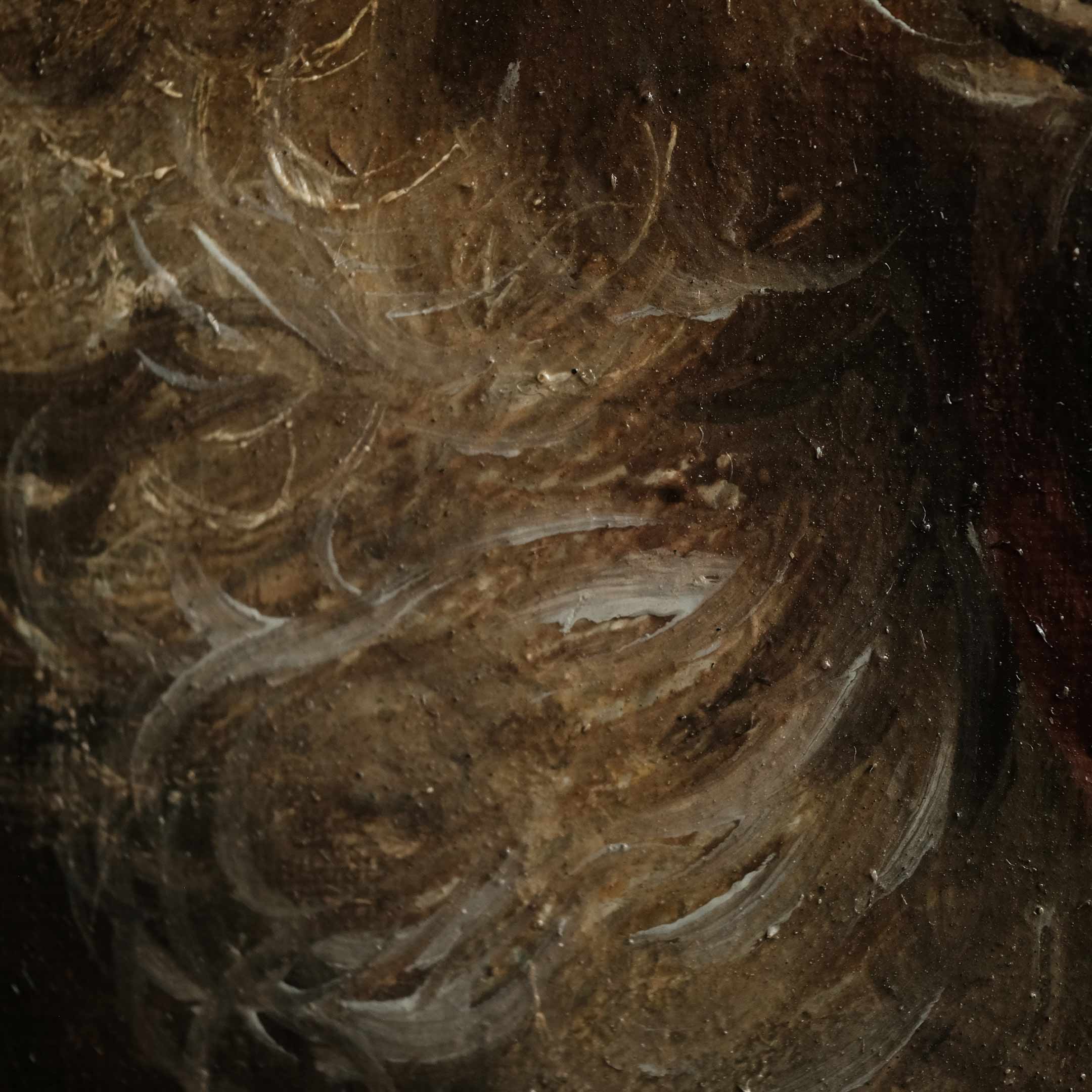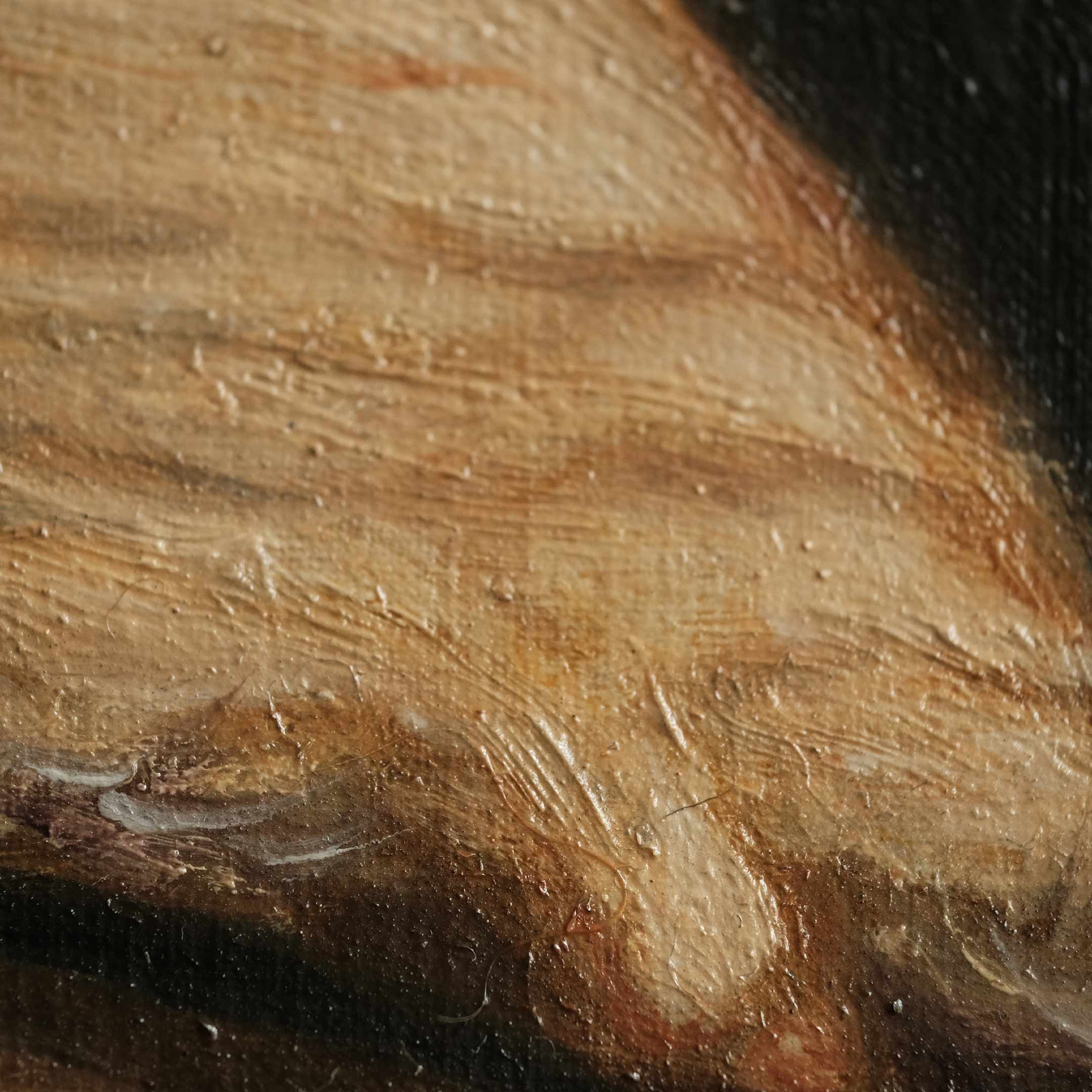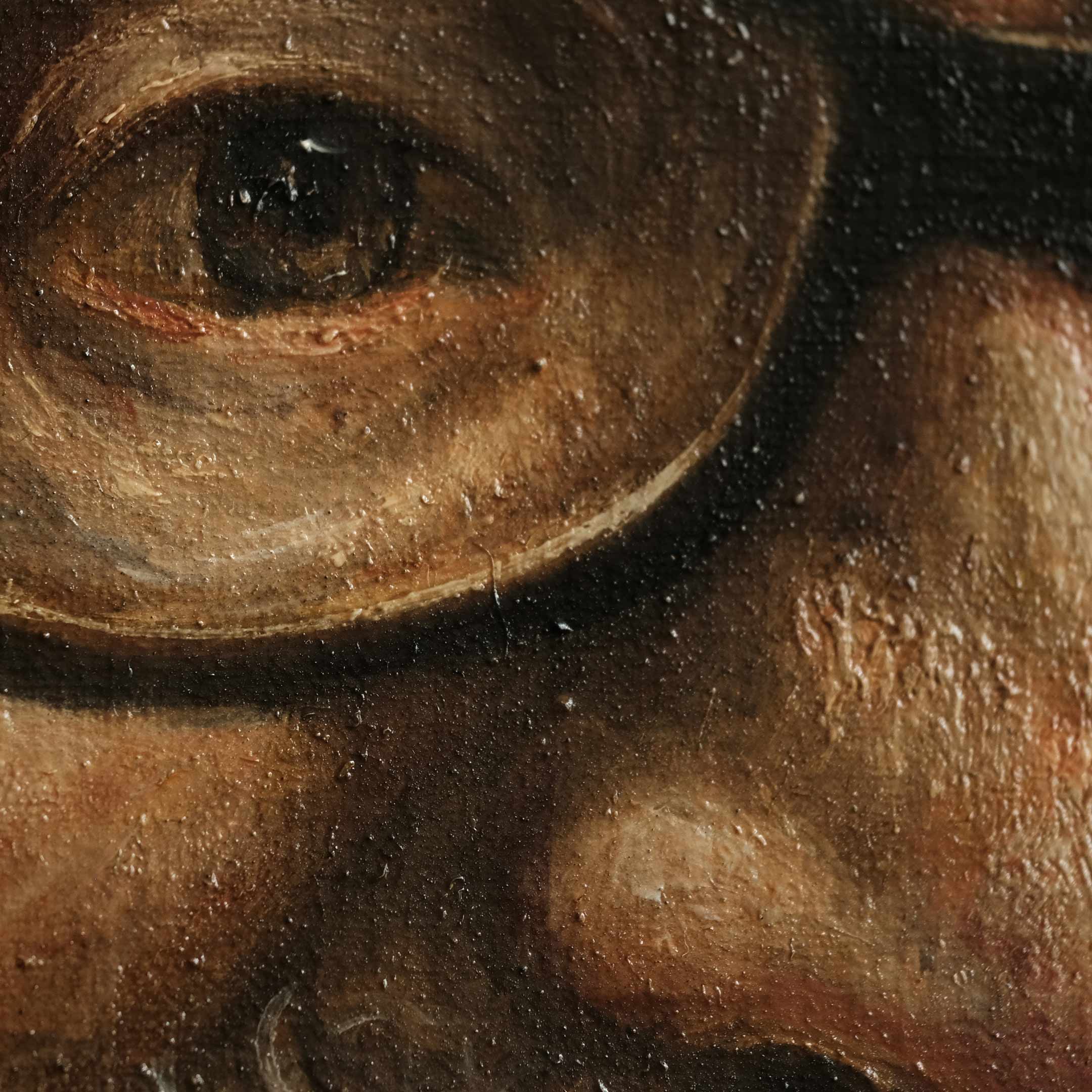Laughter of the Last Tooth
Oil on paper , traditional technique of the Old Masters
This painting captures a vivid moment of raw human expression — the unrestrained joy and absurdity of laughter, distilled into the animated face of an old Jewish man with a single remaining tooth. The subject, though humorous in form, carries a deep undercurrent of humanity: a man aged and worn by time, yet bursting with life and energy. His toothless grin becomes a monument to resilience, defiance, and joy in imperfection.
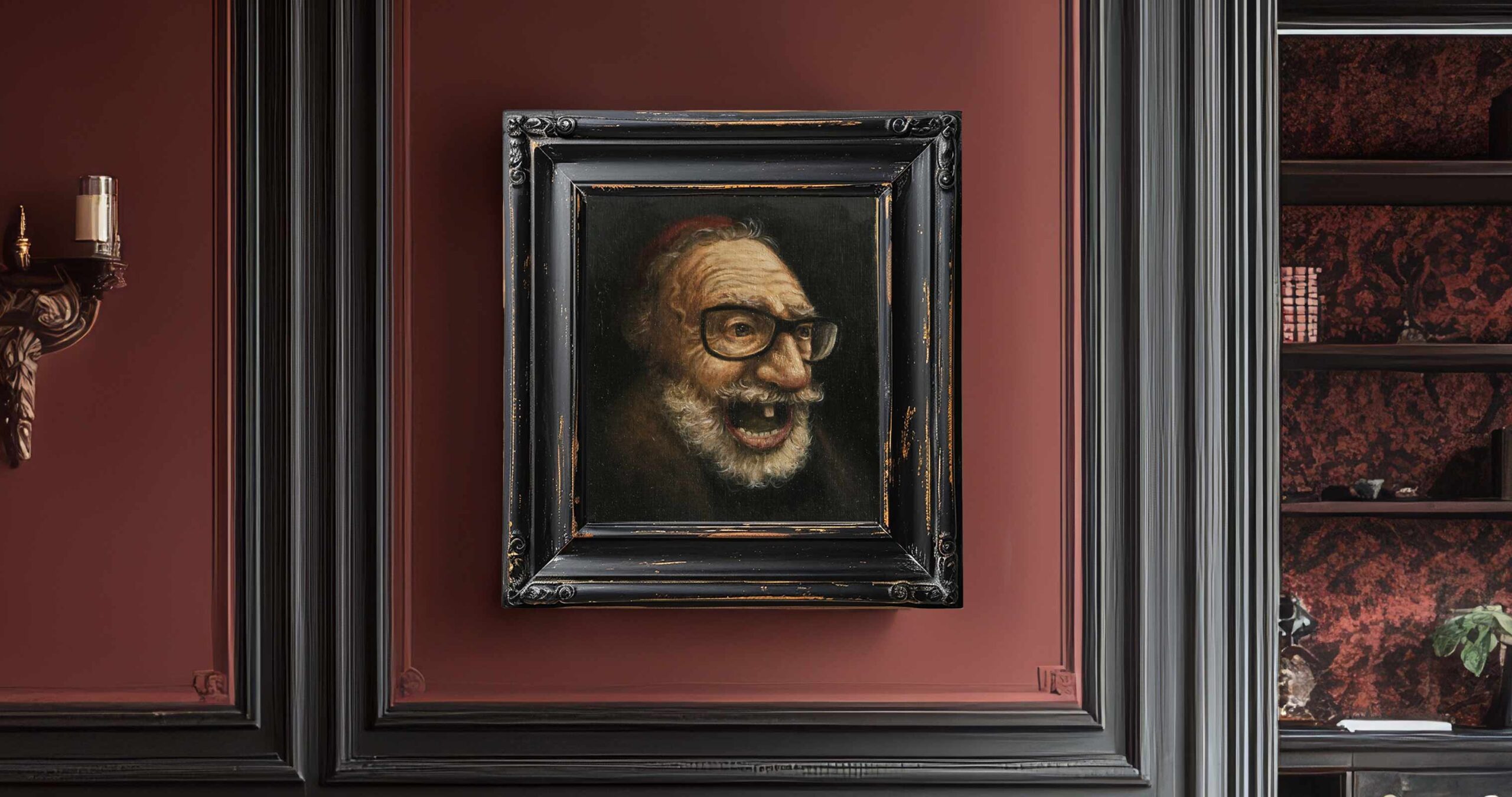
"Laughter of the Last Tooth" Oil on linen – traditional multi-layer technique in the manner of the Old Masters
This painting is a celebration of contradiction — a joyful howl emerging from the weathered visage of an aging man. The subject, a Jewish elder caught in the ecstasy of laughter, is portrayed with brutal honesty and warm affection. His face, wrinkled and marked by time, is animated in a moment of almost childlike amusement. A single prominent tooth becomes the unlikely centerpiece of the composition, both comic and tragic, symbolizing survival, imperfection, and the irrepressible human spirit.
At its core, this is not simply a portrait, but a psychological study — an exploration of what remains when all else is stripped away. The joy here is not naive; it is a seasoned joy, earned through endurance. The man laughs not in spite of age, but through it — a theme as timeless as it is human.
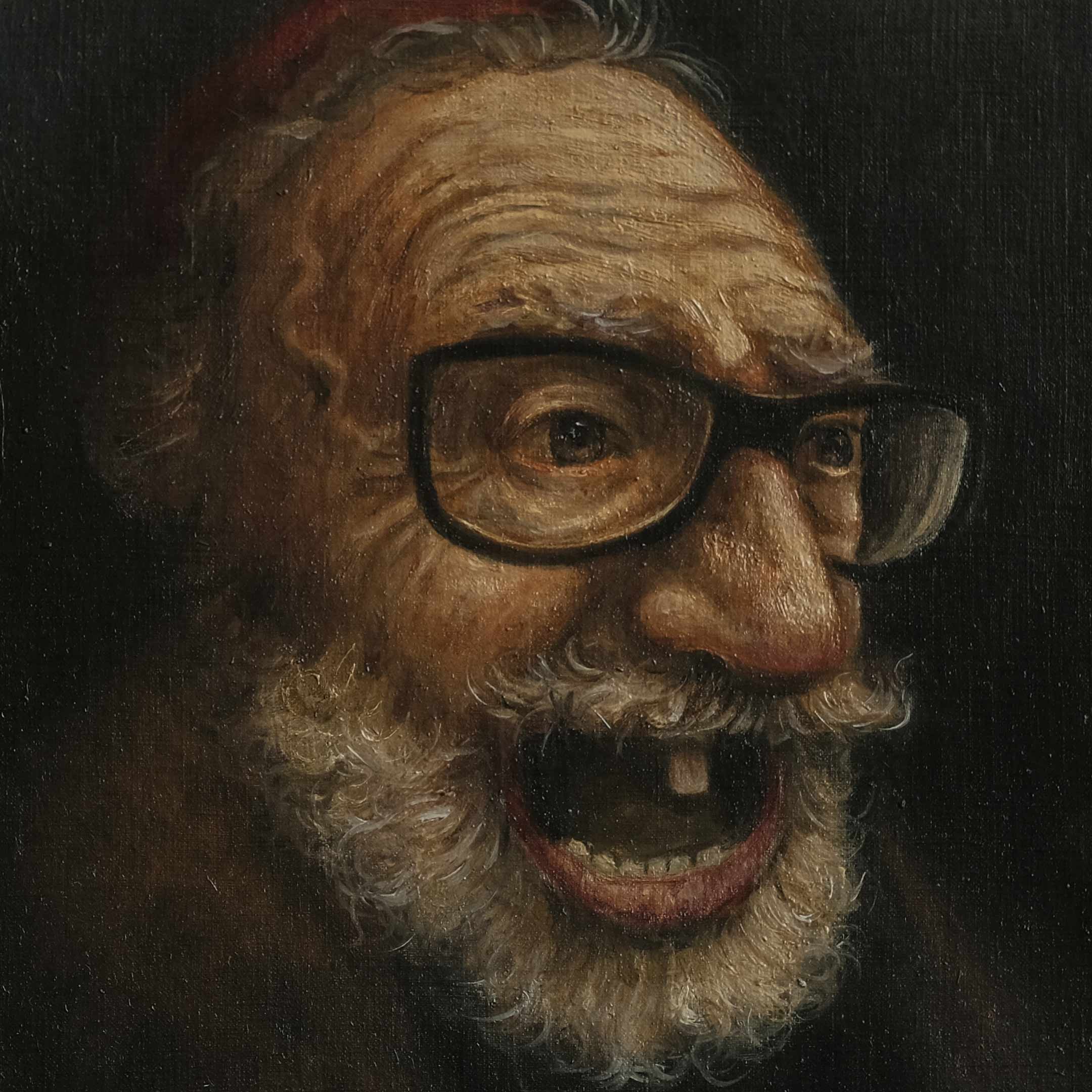
Technique and Materials
Executed using oil on high-quality linen, this work follows the historical methodology of the Old Masters, particularly the Dutch-Flemish school. The process begins with a toned imprimatura layer, followed by a monochromatic underpainting (grisaille), over which semi-transparent color glazes (lazur) are applied in multiple sessions. This careful buildup of layers allows for an extraordinary depth and dimensionality, giving the flesh tones their luminous, almost breathing quality.
A key ingredient in the optical quality of the painting is lead white, hand-prepared using the Dutch stack process, where metallic lead is corroded naturally over vinegar and horse manure — a slow, alchemical transformation that yields a pigment of unmatched body, warmth, and flexibility. This lead white forms the foundation of all light areas and midtones, allowing subtle modulations and textures that synthetic modern whites cannot replicate.
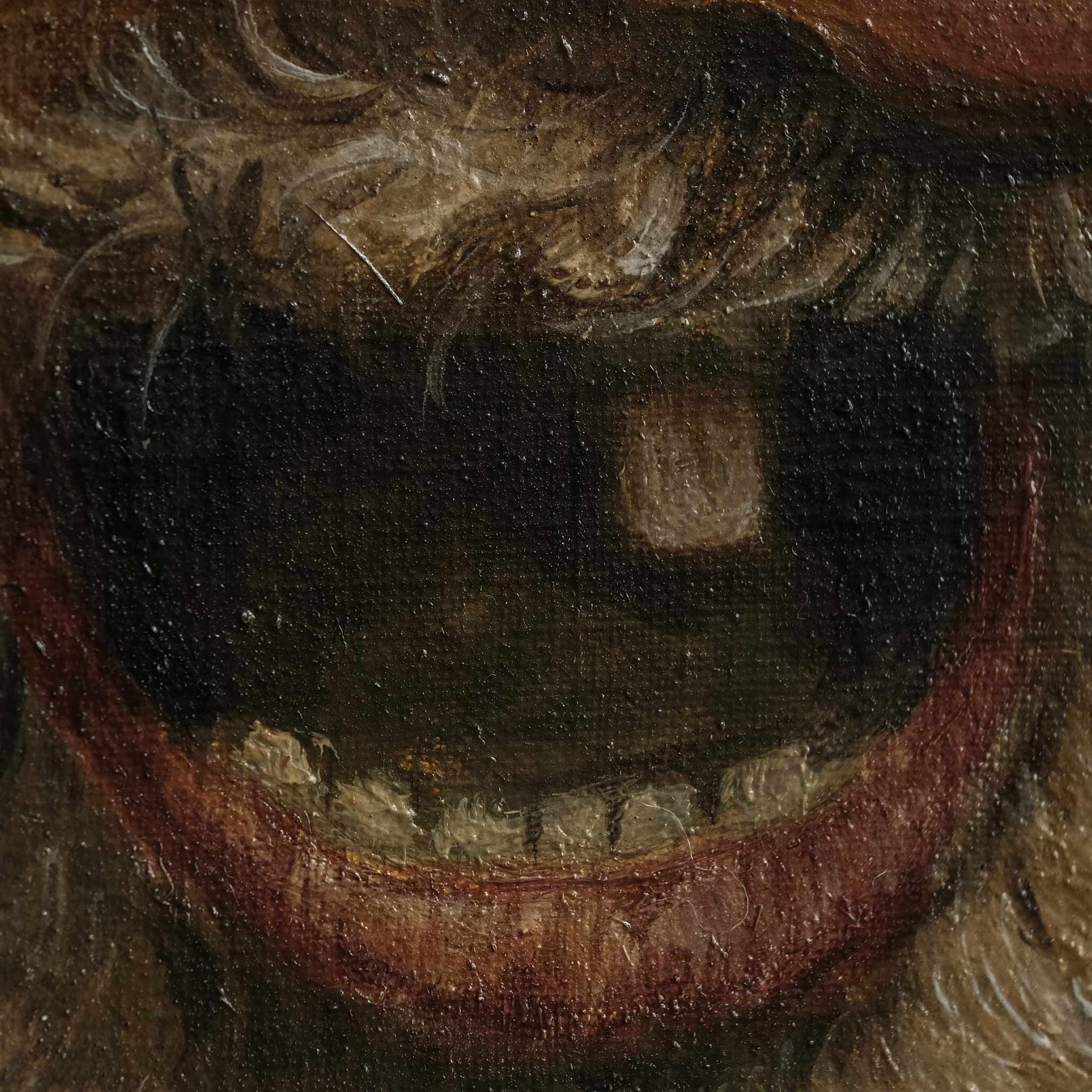
Expression and Symbolism
The tooth — or rather, the single remaining tooth — becomes an anchor point of expressive power. It transforms the laughter from a purely joyful event into something layered and ambiguous. It is grotesque, yet dignified. Humorous, yet profound. In many ways, this one small detail becomes a memento mori, reminding us of mortality, but in doing so, it enhances the vitality of the present moment.
The figure wears glasses, another modern intrusion into a classical setting. This further complicates time and context — is this a man from the 17th century or from our own world, rendered timeless by his emotion? The painting resists answers, offering instead a universal image of human contradiction: fragility wrapped in



